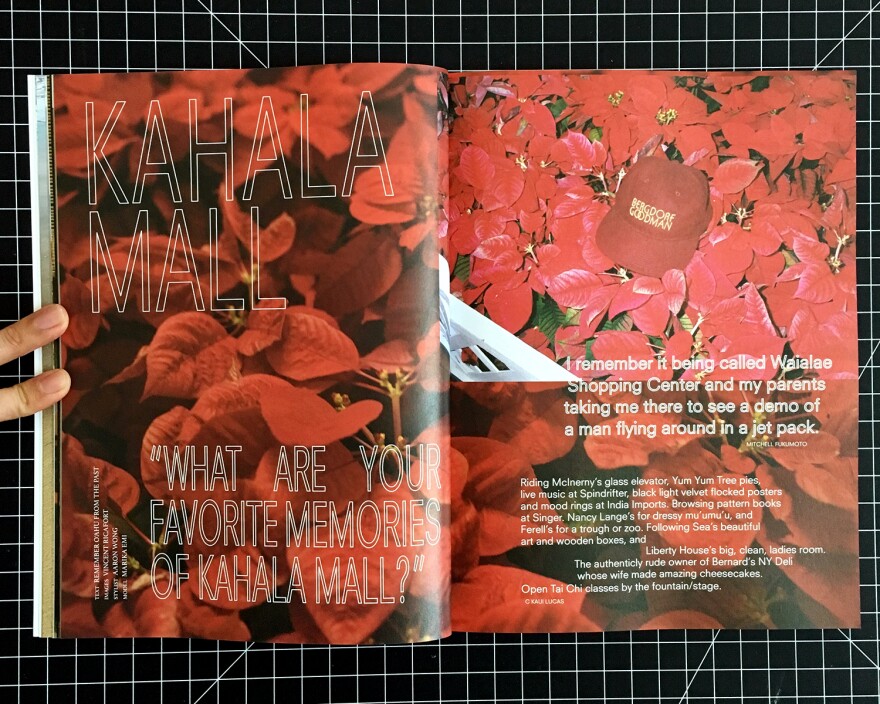The staggering growth of digital media has not been the death knell for print that many people predicted. Magazines, in fact, have found niche markets and new opportunities in formats that still lure readers and fans who seek them out. HPR’s Noe Tanigawa reports on a new magazine in Honolulu that may feel a little bit more like home.

Tropic Zine is the namesake publication of a new non-profit press. Founded by printmaker Marika Emi, with input from her friend, Drew, the magazine aims to present our lives in Hawai‘i a little differently. Emi says she was tired of:
Emi: Seeing Hawai‘i as this more or less touristic paradise that can be consumed in some way. Just this idea of consuming it and then leaving it. I wanted to make something that felt like it stayed with me a little longer, stayed with the reader a little bit longer.

Publishing industry watchers agree the migration to digital has affected the magazine business differently than you might think. Some publishers, like Trusted Media Brands, say the market for Single Issue Publications is strong, and consumers are willing to pay more for these special products. They’re seen as a vibrant middle ground between books and magazines, and many are good looking enough to want to keep.
In this first edition, Tropic offers an insider view of the Universal Show Queen Pageant, a crowd sourced memoir of K?hala Mall, and two Filipina designers stage an edgy fashion shoot in Manila. Among other things.

Emi: I am very inspired by zine culture in Hawai‘i. There has been a robust history of individuals taking on these DIY projects, very closely associated with the punk scene here. I felt I was a part of that in high school here, and I wanted to make an ode to that, that felt true to that scrappy collaborative effort where you know a zine fest is coming up, so you and all your friends get together and you start jamming over a Xerox machine and making something. So I wanted it to involve other people in their own way, their unfettered effort and then just throw it all together and make it feel good and put it out in the world.
Emi has already instigated unexpected collaborations, and sees each story as a mini exhibition for the artists involved.

I loved the first few pages. What an investment---thrilling.
Drew: Yeah it’s interesting how space becomes a commodity in a magazine. And if you use it in a way that “wastes” it from a certain perspective, it becomes a thrilling investment.
Emi: That’s a learning lesson, as a fairly amateur publication designer. So yeah, the viewers of this publication get to learn that alongside me. What it means to restrain at times and let images speak for themselves.
Tropic Zine is now available online as well as at Na Mea in Ward Center, Aupuni Space gallery in Kaka‘ako, mori in South Shore Market and HiSAM, and Number 808 in Haleiwa. e-Tropic is the online division of Tropic Zine, with free igital exclusives published seasonally.





